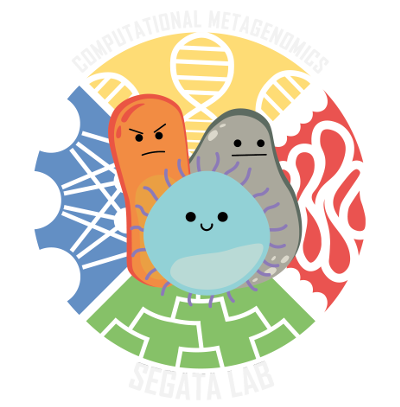PhyloPhlAn
PhyloPhlAn is an integrated pipeline for large-scale phylogenetic profiling of genomes and metagenomes. PhyloPhlAn is an accurate, rapid, and easy-to-use method for large-scale microbial genome characterization and phylogenetic analysis at multiple levels of resolution. PhyloPhlAn can assign both genomes and metagenome-assembled genomes (MAGs) to species-level genome bins (SGBs). PhyloPhlAn can reconstruct strain-level phylogenies using clade-specific maximally informative phylogenetic markers, and can also scale to very-large phylogenies comprising >17,000 microbial species.
PhyloPhlAn 3.0 installation
PhyloPhlAn 3.0 is released in Bioconda and can be installed using the following command:
PhyloPhlAn 3.0 useful links
- The software repository of PhyloPhlAn 3.0
- The 369 Ethiopian MAGs
- The user manual and tutorials
- The user support
PhyloPhlAn 3.0 citation
Nature Communications, vol. 11, p. 2500, May 2020 10.1038/s41467-020-16366-7
Abstract. Microbial genomes are available at an ever-increasing pace, as cultivation and sequencing become cheaper and obtaining metagenome-assembled genomes (MAGs) becomes more effective. Phylogenetic placement methods to contextualize hundreds of thousands of genomes must thus be efficiently scalable and sensitive from closely related strains to divergent phyla. We present PhyloPhlAn 3.0, an accurate, rapid, and easy-to-use method for large-scale microbial genome characterization and phylogenetic analysis at multiple levels of resolution. PhyloPhlAn 3.0 can assign genomes from isolate sequencing or MAGs to species-level genome bins built from >230,000 publically available sequences. For individual clades of interest, it reconstructs strain-level phylogenies from among the closest species using clade-specific maximally informative markers. At the other extreme of resolution, it scales to large phylogenies comprising >17,000 microbial species. Examples including Staphylococcus aureus isolates, gut metagenomes, and meta-analyses demonstrate the ability of PhyloPhlAn 3.0 to support genomic and metagenomic analyses.
Older PhyloPhlAn versions
PhyloPhlAn is a new method for improved phylogenetic and taxonomic placement of microbes
Nature Communications, vol. 4, p. 2304, Jul. 2013 10.1038/ncomms3304
Abstract. New microbial genomes are constantly being sequenced, and it is crucial to accurately determine their taxonomic identities and evolutionary relationships. Here we report PhyloPhlAn, a new method to assign microbial phylogeny and putative taxonomy using >400 proteins optimized from among 3,737 genomes. This method measures the sequence diversity of all clades, classifies genomes from deep-branching candidate divisions through closely related subspecies and improves consistency between phylogenetic and taxonomic groupings. PhyloPhlAn improved taxonomic accuracy for existing and newly sequenced genomes, detecting 157 erroneous labels, correcting 46 and placing or refining 130 new genomes. We provide examples of accurate classifications from subspecies (Sulfolobus spp.) to phyla, and of preliminary rooting of deep-branching candidate divisions, including consistent statistical support for Caldiserica (formerly candidate division OP5). PhyloPhlAn will thus be useful for both phylogenetic assessment and taxonomic quality control of newly sequenced genomes. The final phylogenies, conserved protein sequences and open-source implementation are available online.


